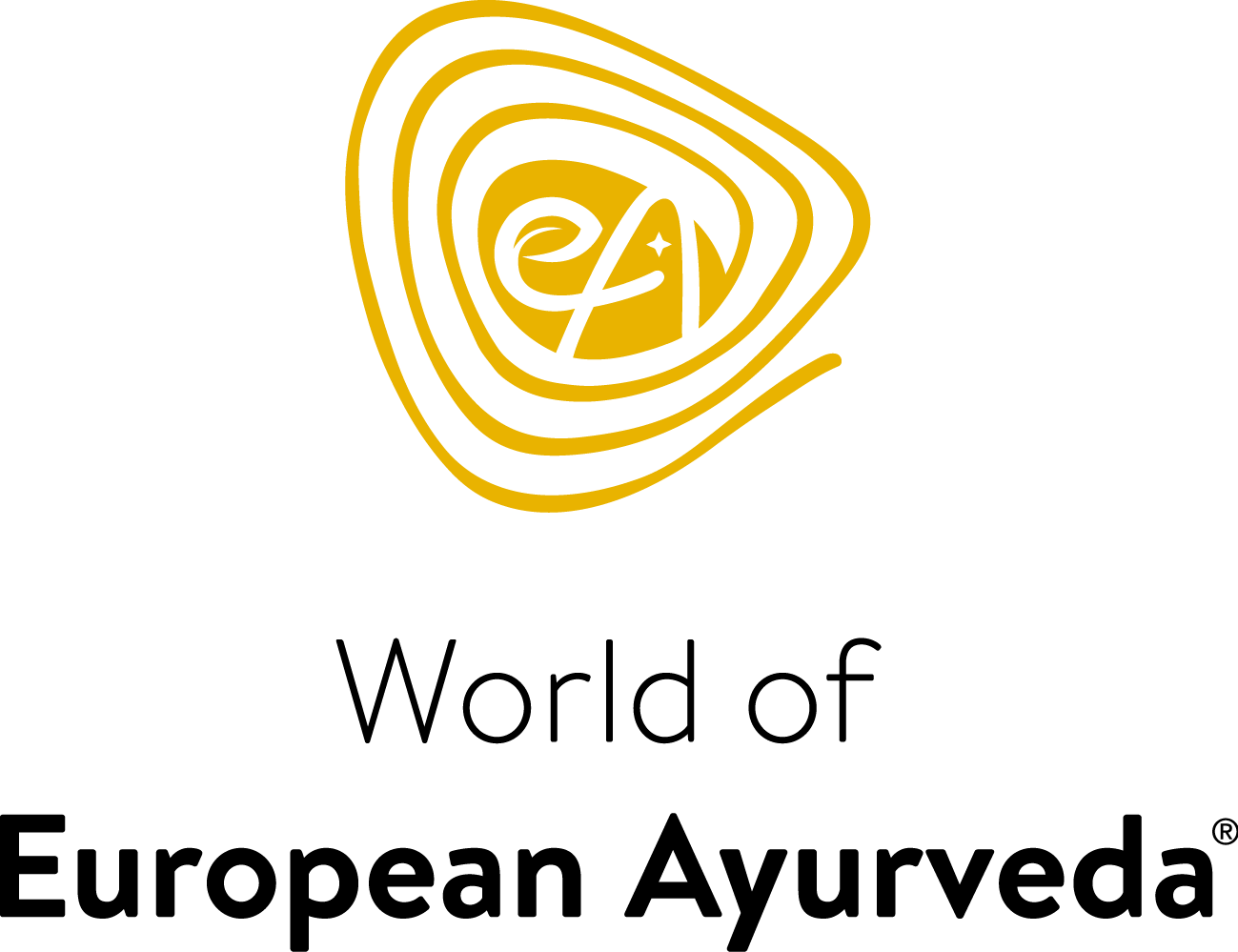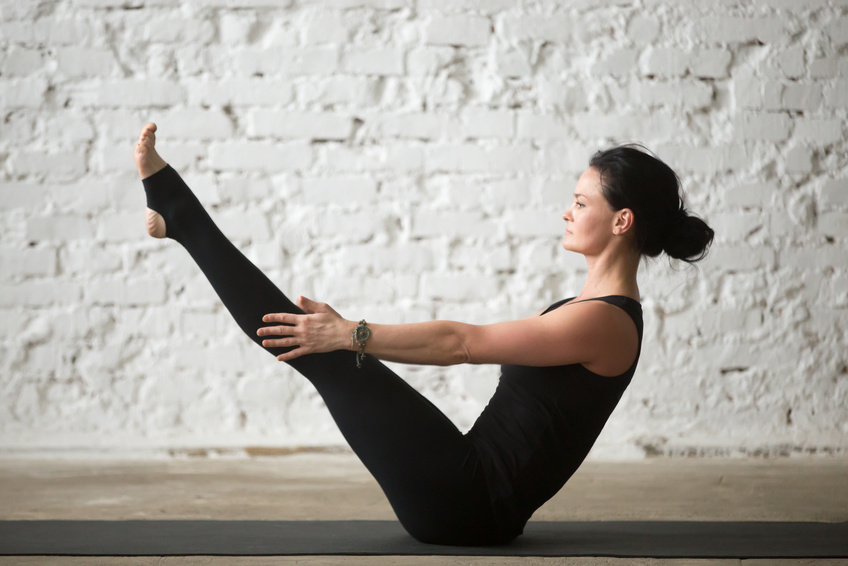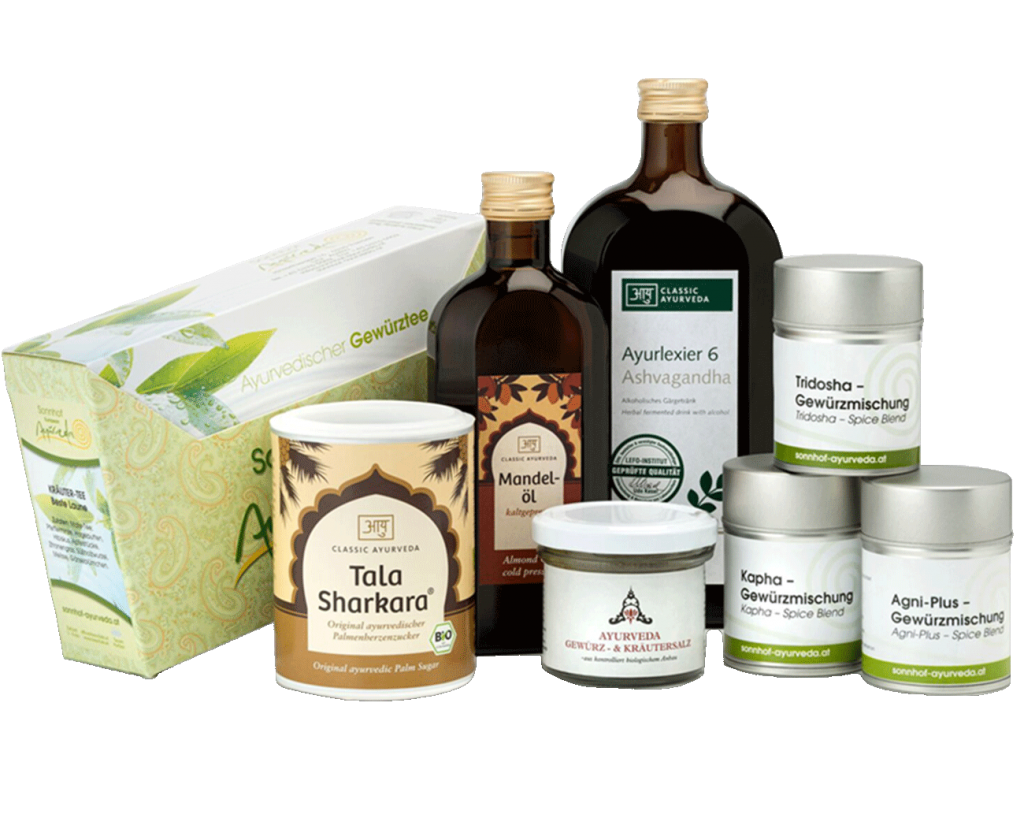Strengthened abdominal muscles are central to a stable core and harmonised energy distribution. We have put together 4 simple yoga exercises for you, with which you can specifically train your abdominal muscles. Also suitable for beginners!
Yoga for the belly: how to strengthen your core
Your abdominal muscles are irreplaceable as support for the abdominal cavity. The spine and pelvis also depend on the stability of these muscles, and the abdominal organs can be protected in this way. This basically involves 29 important muscles that give you the mobility you need. Precisely because of these many different muscles, it is also clear that not just one yoga exercise can lead to success. Different muscle groups are always addressed. The pelvic floor muscles are also part of the abdominal muscles.
But what does it actually mean to strengthen your abdominal muscles? Basically, on the energy level, the centre of the body stands for courage, determination and self-confidence. By activating your abdominal muscles, you also promote your inner energetic strength and find more stability. In addition, you protect your lower back from injury. Balanced energy in your core is essential for your navel centre to harmonise the ascending energy (Prana Vayu) and the descending energy (Apana Vayu).
4 great yoga exercises for the abdominal muscles
First of all, the following is extremely important: always do the yoga exercises with bent legs! Very often the backs of our legs are shortened, and this ensures that when we stretch our legs we end up with the undesirable hunchback. Therefore, you should always make sure to keep the curves of your spine as natural as possible so as not to strain your intervertebral discs.
Exercise 1: The Boat Posture (Navasana)
- Adopt a relaxed sitting posture, the back is long, the spine neutral.
- Now pull your shoulders back, away from your ears.
- The tips of your shoulder blades come together. This also provides back support.
- Now lift your legs and bend them, the knees and ankles touching each other. This creates more centre.
- Now stretch the legs to the side, turning the upper body with them. The arms are also moved.
- Try to do this for one minute.
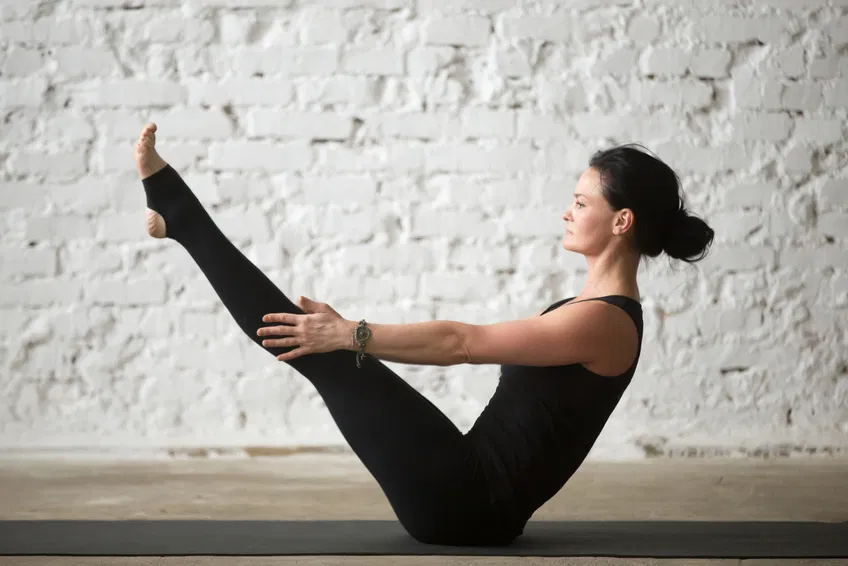
By the way, you can also combine this exercise with a twisting movement - this way you also train the lateral abdominal muscles:
- They are back in the boat position.
- This time interlace your fingers behind your head. The knees remain drawn towards your body.
- Your head is pressed into the palms of your hands and vice versa. This makes the cervical spine long and strengthens your neck muscles. You can also stretch your arms out to the side.
- Exhale and turn to the right with from the centre of the body.
- With the inhale turn back to the centre, then with the exhale turn to the left.
- You can do that as often as you like!
The boat pose trains all 4 layers of the abdominal muscles and is therefore a particularly popular yoga exercise.
Exercise 2: The board (Chaturanga)
This yoga exercise is on the one hand simple, but also wonderfully effective:
- Support yourself on your toes and forearms on the yoga mat. The upper and lower arm should form a 90° angle.
- Tense your lower and upper body and hold the exercise for at least 5 long breaths. Preferably for as long as you can.
- Now relax. Then repeat the exercise 3-5 times.
This strengthens both the abdominal and the back muscles.
Exercise 3: Four-footed stand Variation
With this exercise you intensify your abdominal muscle training:
- Kneel on your yoga mat with your hands flat on the floor.
- Raise your right leg and extend it backwards parallel to the floor.
- Your spine is stable and long!
- Find the centre of your body and also stretch your left arm far forward.
- With the exhalation now pull your right knee and left elbow towards each other.
- Breathe in and stretch your arm and leg away from you again.
- Repeat 8 times and then come back to the quadruped position.
- Take a restful break and then practise on the other side.
Exercise 4: The sunrise
- Lie on your back.
- The feet are placed hip-width apart and as close to the buttocks as possible.
- Pull your chin in slightly - this ensures a straight neck
- Her arms lie next to her body.
- Inhale and slowly raise the hips. The pelvic floor is tense.
- Your arms come under your buttocks, because this supports the body tension.
- Continue breathing calmly and hold the position for at least 15 seconds
- Loosen again and repeat about 4 times
The sunrise also strengthens the buttocks, as well as the muscles of the lumbar spine, and also relieves the pelvic floor.
Conclusion
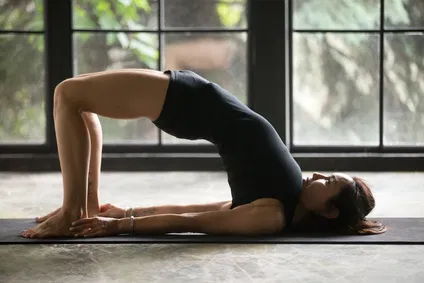
Strengthening the abdominal muscles is extremely important to achieve harmonious balance. Your abdominal muscles provide the important stability in the abdominal area. Strengthened abdominal muscles are also central for the spine and pelvis. They also protect your abdominal organs. Why not try our simple yoga exercises and harmonise the energy of your body's core!
Cover photo: © fizkes - stock.adobe.com
